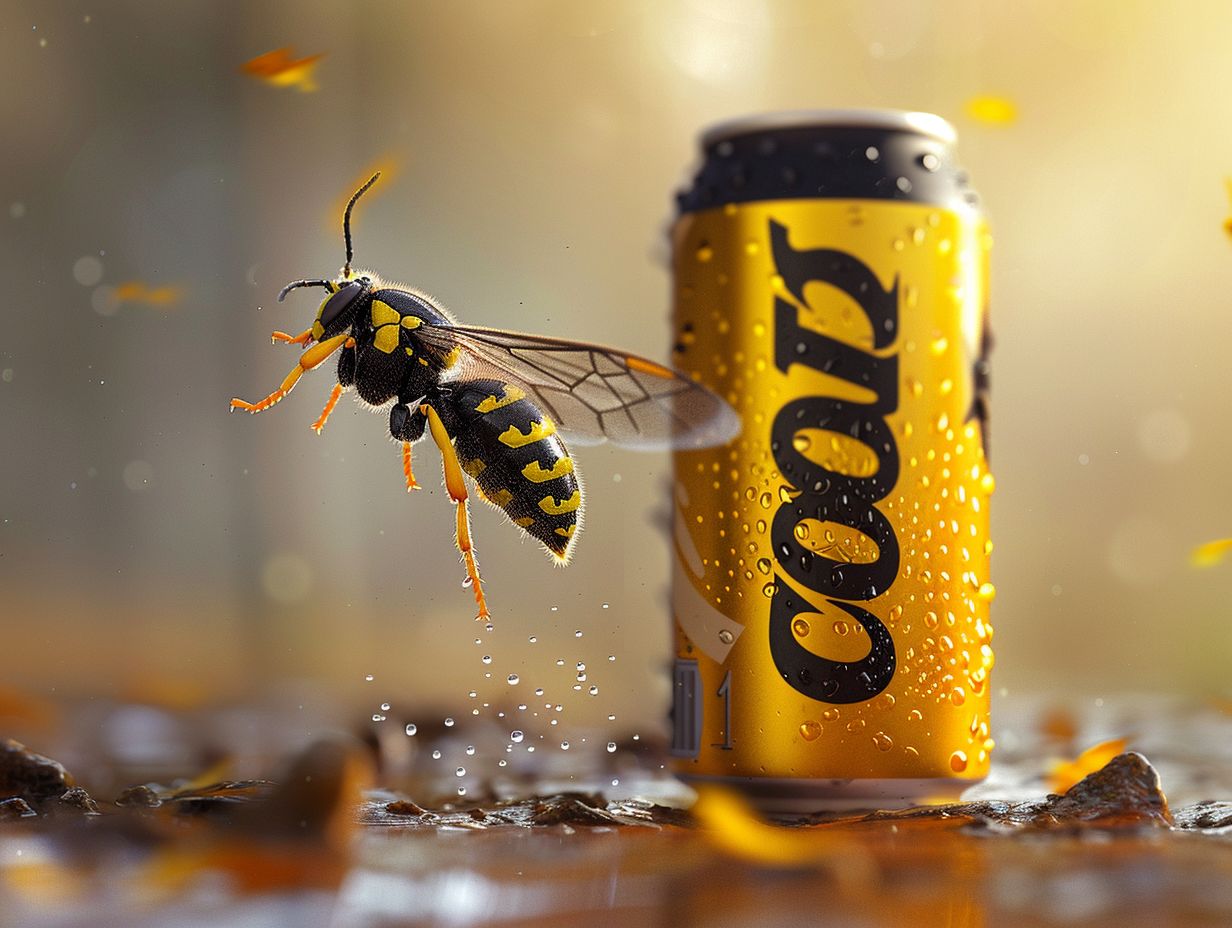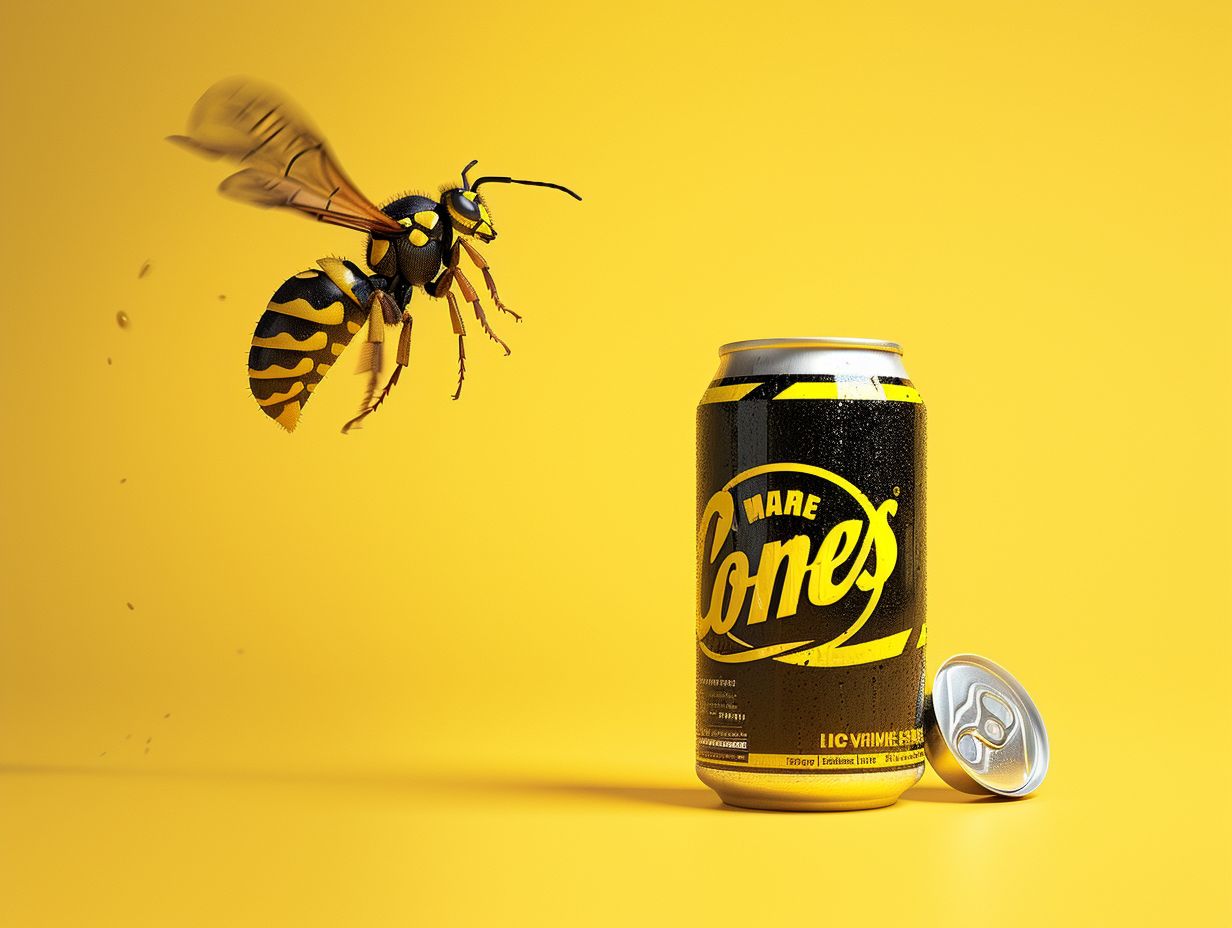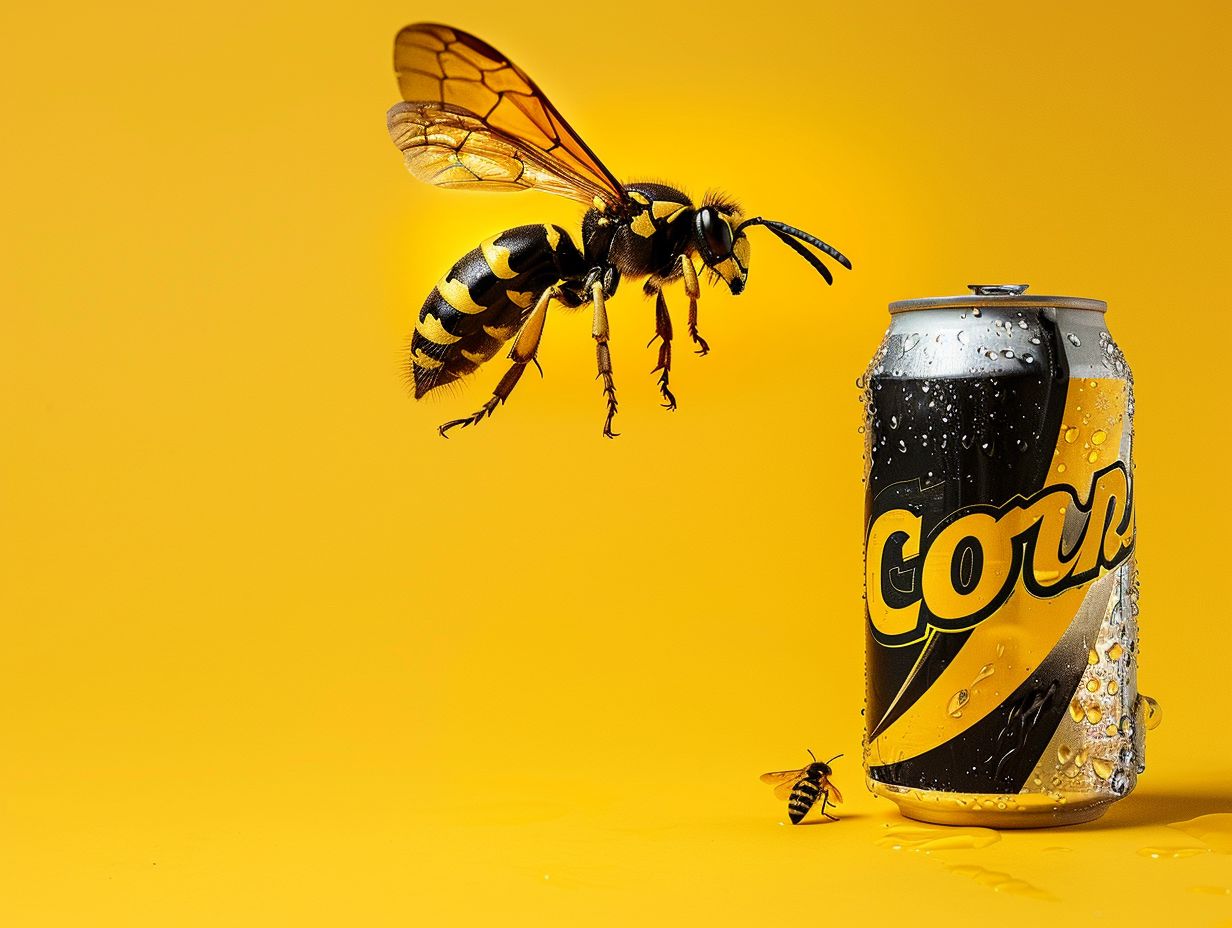We will explore the origins of the Coors name and the connection it has with yellowjackets.
Delve into the intriguing story behind this curious nickname, from the original name of the Coors brewery to the characteristics of a yellowjacket insect.
Join us as we uncover the mystery of why Coors is called a Yellowjacket.
What Is Coors?

Coors, founded by Adolph Coors in Colorado, is an iconic American brewery known for its legendary brewing techniques and rich heritage.
Since its inception in 1873, Coors has played a significant role in shaping the beer industry landscape in the United States. With a focus on quality ingredients and traditional brewing methods, Coors quickly gained a reputation for producing exceptional brews that captured the essence of American brewing heritage. The brewery’s commitment to authenticity and innovation has not only solidified its place in the hearts of beer enthusiasts but has also positioned it as a trailblazer in the world of marketing and branding within the brewing industry. Coors’ ability to blend tradition with modern marketing strategies has contributed to its enduring popularity and iconic status in American tradition.
How Did Coors Get Its Name?
The name ‘Coors‘ has a deep-rooted history in the brewery’s branding strategy and legacy, reflecting the founder’s identity and vision.
The Coors name originated from Adolph Coors, who founded the brewery in the late 19th century, striving to create a unique identity for his beer. Adolph saw the significance of a strong brand in distinguishing his brew from competitors, leading to the deliberate choice of ‘Coors’ as the name. This intentional branding decision became pivotal in the brewery’s marketing success, as it conveyed authenticity, tradition, and quality.
Over the years, the Coors name has become synonymous with American brewing history, playing a crucial role in shaping the brewery’s enduring legacy.
What Was The Original Name Of Coors?
Before becoming Coors, the brewery was known by its founder’s name, Adolph Coors, highlighting the strong family legacy and entrepreneurial spirit.
The historical roots of Adolph Coors date back to the mid-19th century when Adolph Coors established the brewery in Golden, Colorado. The name Adolph Coors became synonymous with quality brewing practices and a commitment to excellence.
As the brewery expanded and became a household name, the decision was made to transition to simply ‘Coors’ as a way to modernize and streamline the brand’s image. This shift not only aligned with evolving consumer preferences but also helped position the brewery for continued success in the competitive beer market.
Why Did The Name Change To Coors?
The decision to change the brewery’s name to Coors was a strategic move aimed at enhancing brand recognition, aligning with market positioning, and solidifying its identity in the beer industry.
By rebranding to Coors, the brewery aimed to tap into the legacy and reputation associated with the Coors family name, which has a longstanding history in the brewing world. This name change allowed the company to leverage the strong branding and marketing strategies that have been synonymous with the Coors name, enabling them to reach a wider audience and stand out in a competitive market.
The shift not only modernized the brewery’s image but also positioned it as a key player in the industry, influencing consumers’ perceptions and boosting its market presence.
What Is A Yellowjacket?
The Yellowjacket, with its distinctive yellow color and symbolic significance as an insect, has been intertwined with tales, legends, and even served as a mascot for various branding and marketing campaigns.
Known for its aggressive defense of its nest, the Yellowjacket represents courage, protection, and fearlessness in many cultures. In folklore, this insect is often revered for its diligent work ethic and unwavering loyalty to its colony. The Yellowjacket’s sleek and bold appearance has made it a popular choice for sports team mascots, embodying characteristics of strength and determination.
Leveraging the Yellowjacket as a mascot in marketing strategies emphasizes traits like resilience, unity, and competitiveness, resonating with audiences seeking these qualities in products or services.
What Are The Characteristics Of A Yellowjacket?

Yellowjackets, known for their distinct yellow and black coloration, serve as symbolic creatures in tales and legends, often adopted as mascots for their striking appearance.
In various cultures, Yellowjackets are revered for their agility and fierce nature, with their vibrant hues representing courage and determination. Legends depict them as messengers of strength and resilience, their buzzing flight echoing warrior-like attributes.
The symbolism attached to Yellowjackets carries through to modern times, with sports teams and organizations choosing them as mascots to embody qualities like teamwork, competitiveness, and unwavering spirit. The Yellowjacket’s distinct appearance makes them stand out, representing a sense of unity and pride for those who embrace them as symbols of their identity and aspirations.
How Did Yellowjackets Get Their Name?
The name ‘Yellowjacket’ for these insects likely originates from their vibrant yellow coloring, which has led to their inclusion in various tales and legends due to their striking appearance.
It is believed that the distinctive yellow hue of Yellowjackets serves as a warning signal to potential predators, indicating their ability to defend themselves when threatened. Throughout history, this bold coloring has been associated with courage, resilience, and protection in many cultures.
In folklore, Yellowjackets are often depicted as symbols of strength and determination, with their presence signifying the need to stand firm in the face of challenges. The name ‘Yellowjacket’ holds a deep symbolism, embodying the essence of tenacity and unwavering defiance.
What Is The Connection Between Coors And Yellowjackets?
The connection between Coors and Yellowjackets goes beyond mere symbolism, encompassing a rich tale, and a legendary mascot that has become intertwined with the brewery’s branding and marketing strategies.
The story behind the Yellowjackets as Coors’ mascot dates back to the 1870s when Adolph Coors selected the flying insect as a representation of the brewery’s commitment to quality and hard work.
This choice has since morphed into a powerful symbol that resonates with consumers, evoking feelings of tradition, resilience, and a nod to the brewery’s roots in Golden, Colorado.
The Yellowjackets embody a unique blend of history and modernity, sustaining a timeless allure that adds depth to Coors’ marketing narratives and brand identity.
Is Coors Brewed With Yellowjacket Ingredients?
Coors beer is not brewed with Yellowjacket ingredients; instead, the brewery employs traditional brewing techniques and quality ingredients to craft its iconic beverages.
Maintaining a legacy of excellence, Coors takes pride in sourcing the finest hops, malted barley, and yeast to create a distinct flavor profile that has captivated beer enthusiasts for generations. By upholding their dedication to using pure Rocky Mountain water in every batch, Coors ensures a crisp and clean taste that is synonymous with their brand. This commitment to utilizing time-honored brewing methods showcases Coors’ unwavering passion for delivering a consistent and exceptional drinking experience with each sip of their renowned brews.
Does Coors Have A Yellow And Black Label?
Coors does not have a yellow and black label directly linked to Yellowjackets; however, the brewery’s branding may incorporate elements inspired by the distinctive colors of the insect.
This potential integration of Yellowjacket-inspired elements could offer Coors a unique opportunity to infuse their branding with a bold and eye-catching aesthetic. By leveraging the striking contrast of yellow and black, similar to the colors found on Yellowjackets, Coors could create a visually dynamic label design that stands out on shelves and captures consumer attention. Incorporating these colors strategically could not only pay homage to the insect but also enhance the overall brand identity and recognition in a competitive market.
Is There A Story Behind The Yellowjacket And Coors Connection?

The Yellowjacket and Coors connection is not merely a coincidence; it stems from a captivating tale that has transformed the insect into a legendary mascot for the brewery’s branding and marketing endeavors.
Legend has it that the Yellowjacket’s portrayal as a symbol of resilience and determination mirrors the values deeply ingrained in Coors’ heritage. This connection serves as more than just a marketing ploy; it’s a nod to the brewery’s commitment to quality and tradition. By embracing this folklore and incorporating it into their branding strategies, Coors reinforces its identity as a brand rooted in rich narratives and enduring legacies, captivating consumers with its authenticity and storytelling prowess.
Why Is Coors Called A Yellowjacket?
Coors earned the nickname ‘Yellowjacket’ due to a blend of branding strategy, legend, and the symbolic significance associated with the insect’s yellow color, embodying a unique identity in the beer industry.
This designation reflects the deliberate choice by Coors to align its image with the attributes commonly associated with yellowjackets – namely, resilience and tenacity. By tapping into the fierce and industrious nature of yellowjackets, Coors creates a connection with consumers who appreciate these traits.
The yellow color, often denoting energy and warmth, adds a vibrant and memorable element to the brand. Through the ‘Yellowjacket’ moniker, Coors reinforces its image as a bold, distinctive player in the competitive beer market.
What Is The Official Explanation From Coors?
The official explanation from Coors regarding the Yellowjacket connection delves into the symbolic resonance of the insect’s characteristics, its role in branding, and the legendary aura it brings to the brewery.
Coors views the Yellowjacket as a symbol of resilience, hard work, and the ability to adapt in challenging environments, embodying the spirit that resonates with the brand’s values.
By embracing the Yellowjacket in their branding, Coors not only pays homage to the insect’s symbolism but also leverages its unique storytelling potential to engage consumers on a deeper level.
This strategic move allows Coors to differentiate itself in the competitive market, stand out in the minds of consumers, and create a memorable brand identity that extends beyond traditional marketing strategies.
Are There Any Other Theories?
While the official explanation aligns Coors with the Yellowjacket, alternative theories speculate on different origins for the nickname, ranging from branding strategies to legendary tales and mascot inspirations.
Some branding theorists suggest that the choice of ‘Yellowjacket’ was a deliberate move by Coors to evoke an image of boldness and tenacity, characteristics often associated with the insect.
Others propose that the nickname might have emerged from local folklore, where the Yellowjacket symbolizes protection or strength, aligning with the brewery’s values.
There are theories that draw parallels between Coors’ iconography and various interpretations of the Yellowjacket in different cultures, suggesting a more nuanced inspiration behind the choice of the nickname.
What Is The Public Perception Of The Yellowjacket Name?
The public perception of the Yellowjacket name in relation to Coors reflects a blend of branding impact, marketing strategies, mascot symbolism, and the intriguing tale woven around this distinctive moniker.
Yellowjacket, as a name, has become synonymous with the Coors brand, evoking images of strength, resilience, and a bold spirit. This association has deep-rooted marketing resonance, with consumers often connecting the name to Coors’ history of quality and craftsmanship.
The choice of a yellowjacket as a mascot further reinforces this image, symbolizing agility and a fierce loyalty to the brand. The narrative surrounding the Yellowjacket name adds an element of mystique and intrigue, capturing the imagination of both existing customers and potential new ones.”
Frequently Asked Questions

Why Is Coors Called A Yellowjacket?
Coors is called a Yellowjacket because it was the official beer of the Colorado School of Mines, whose mascot is the Yellowjacket.
Is Coors still the official beer of Colorado School of Mines?
No, Coors is no longer the official beer of Colorado School of Mines. The school has since switched to a local craft brewery as their official beer.
Where did the term “Yellowjacket” originate?
The term “Yellowjacket” originated from the school’s colors, black and gold, which resemble the colors of a yellowjacket wasp.
When did Coors become associated with Colorado School of Mines?
Coors became associated with Colorado School of Mines in the 1950s when the brewery began sponsoring school events and activities.
Is Coors still popular among Colorado School of Mines students?
While Coors is no longer the official beer, it is still a popular choice among Colorado School of Mines students and alumni.
Are there any other reasons Coors is called a Yellowjacket?
Aside from its association with Colorado School of Mines, Coors is also known for its yellow packaging and label, adding to the Yellowjacket nickname.





Leave a Reply
You must be logged in to post a comment.